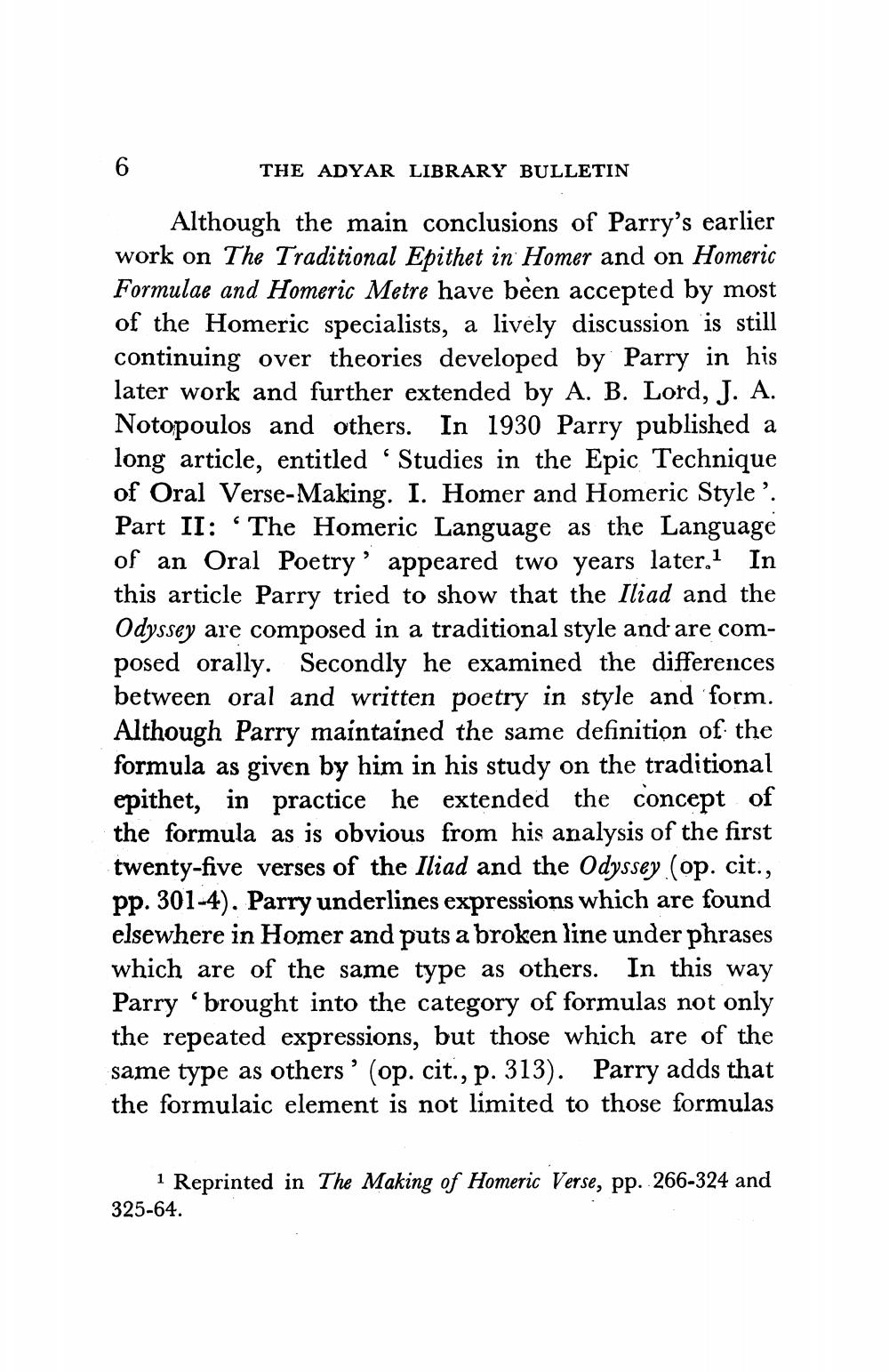________________
THE ADYAR LIBRARY BULLETIN
Although the main conclusions of Parry's earlier work on The Traditional Epithet in Homer and on Homeric Formulae and Homeric Metre have been accepted by most of the Homeric specialists, a lively discussion is still continuing over theories developed by Parry in his later work and further extended by A. B. Lord, J. A. Notopoulos and others. In 1930 Parry published a long article, entitled “Studies in the Epic Technique of Oral Verse-Making. I. Homer and Homeric Style'. Part II: “The Homeric Language as the Language of an Oral Poetry' appeared two years later.1 In this article Parry tried to show that the Iliad and the Odyssey are composed in a traditional style and are composed orally. Secondly he examined the differences between oral and written poetry in style and form. Although Parry maintained the same definition of the formula as given by him in his study on the traditional epithet, in practice he extended the concept of the formula as is obvious from his analysis of the first twenty-five verses of the Iliad and the Odyssey. (op. cit., pp. 301-4). Parry underlines expressions which are found elsewhere in Homer and puts a broken line under phrases which are of the same type as others. In this way Parry 'brought into the category of formulas not only the repeated expressions, but those which are of the same type as others' (op. cit., p. 313). Parry adds that the formulaic element is not limited to those formulas
1 Reprinted in The Making of Homeric Verse, pp. 266-324 and 325-64.




